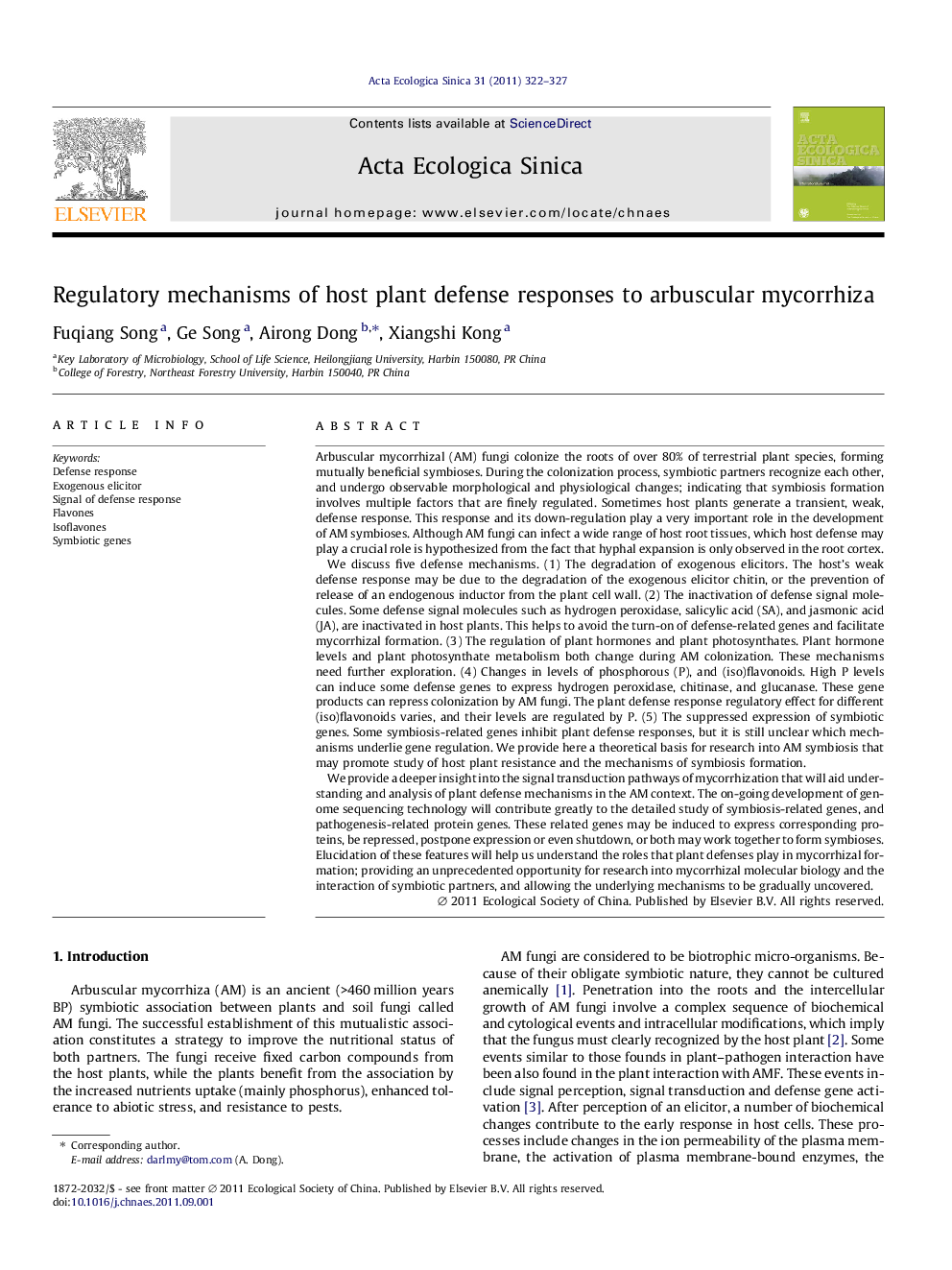| کد مقاله | کد نشریه | سال انتشار | مقاله انگلیسی | نسخه تمام متن |
|---|---|---|---|---|
| 4379907 | 1303949 | 2011 | 6 صفحه PDF | دانلود رایگان |

Arbuscular mycorrhizal (AM) fungi colonize the roots of over 80% of terrestrial plant species, forming mutually beneficial symbioses. During the colonization process, symbiotic partners recognize each other, and undergo observable morphological and physiological changes; indicating that symbiosis formation involves multiple factors that are finely regulated. Sometimes host plants generate a transient, weak, defense response. This response and its down-regulation play a very important role in the development of AM symbioses. Although AM fungi can infect a wide range of host root tissues, which host defense may play a crucial role is hypothesized from the fact that hyphal expansion is only observed in the root cortex.We discuss five defense mechanisms. (1) The degradation of exogenous elicitors. The host’s weak defense response may be due to the degradation of the exogenous elicitor chitin, or the prevention of release of an endogenous inductor from the plant cell wall. (2) The inactivation of defense signal molecules. Some defense signal molecules such as hydrogen peroxidase, salicylic acid (SA), and jasmonic acid (JA), are inactivated in host plants. This helps to avoid the turn-on of defense-related genes and facilitate mycorrhizal formation. (3) The regulation of plant hormones and plant photosynthates. Plant hormone levels and plant photosynthate metabolism both change during AM colonization. These mechanisms need further exploration. (4) Changes in levels of phosphorous (P), and (iso)flavonoids. High P levels can induce some defense genes to express hydrogen peroxidase, chitinase, and glucanase. These gene products can repress colonization by AM fungi. The plant defense response regulatory effect for different (iso)flavonoids varies, and their levels are regulated by P. (5) The suppressed expression of symbiotic genes. Some symbiosis-related genes inhibit plant defense responses, but it is still unclear which mechanisms underlie gene regulation. We provide here a theoretical basis for research into AM symbiosis that may promote study of host plant resistance and the mechanisms of symbiosis formation.We provide a deeper insight into the signal transduction pathways of mycorrhization that will aid understanding and analysis of plant defense mechanisms in the AM context. The on-going development of genome sequencing technology will contribute greatly to the detailed study of symbiosis-related genes, and pathogenesis-related protein genes. These related genes may be induced to express corresponding proteins, be repressed, postpone expression or even shutdown, or both may work together to form symbioses. Elucidation of these features will help us understand the roles that plant defenses play in mycorrhizal formation; providing an unprecedented opportunity for research into mycorrhizal molecular biology and the interaction of symbiotic partners, and allowing the underlying mechanisms to be gradually uncovered.
Journal: Acta Ecologica Sinica - Volume 31, Issue 6, December 2011, Pages 322–327